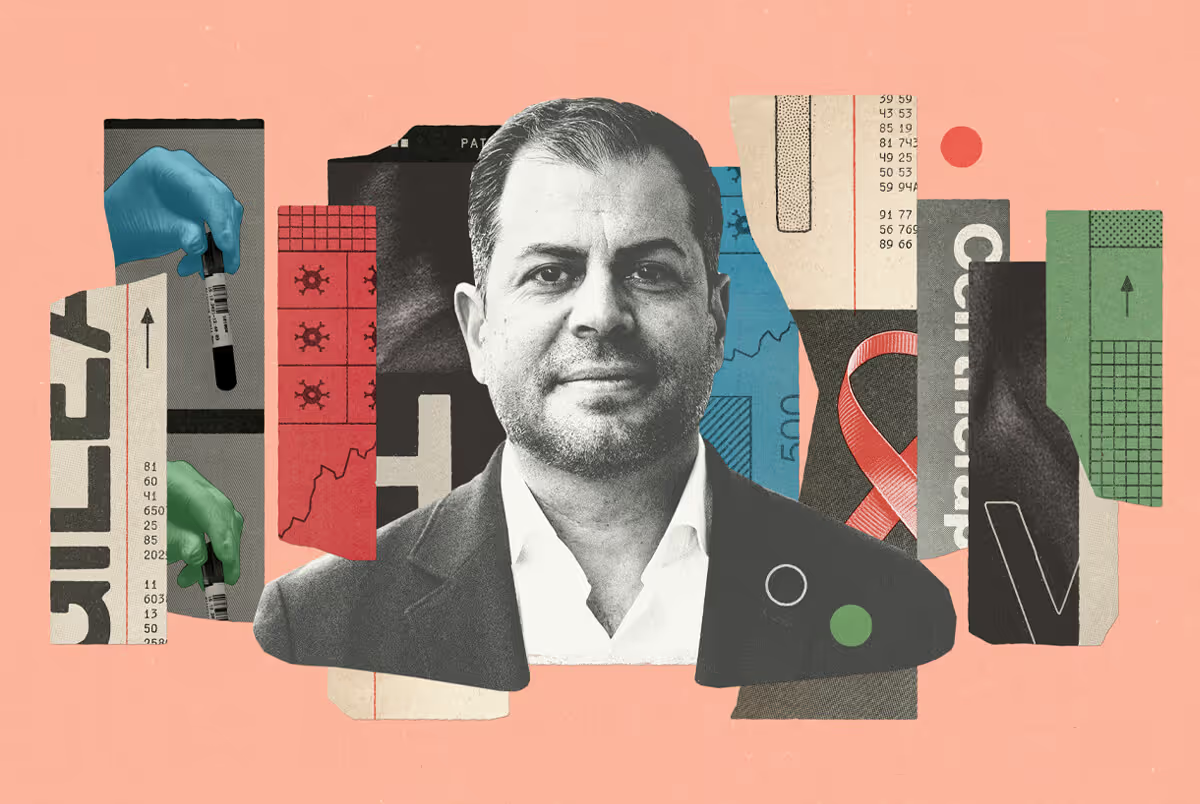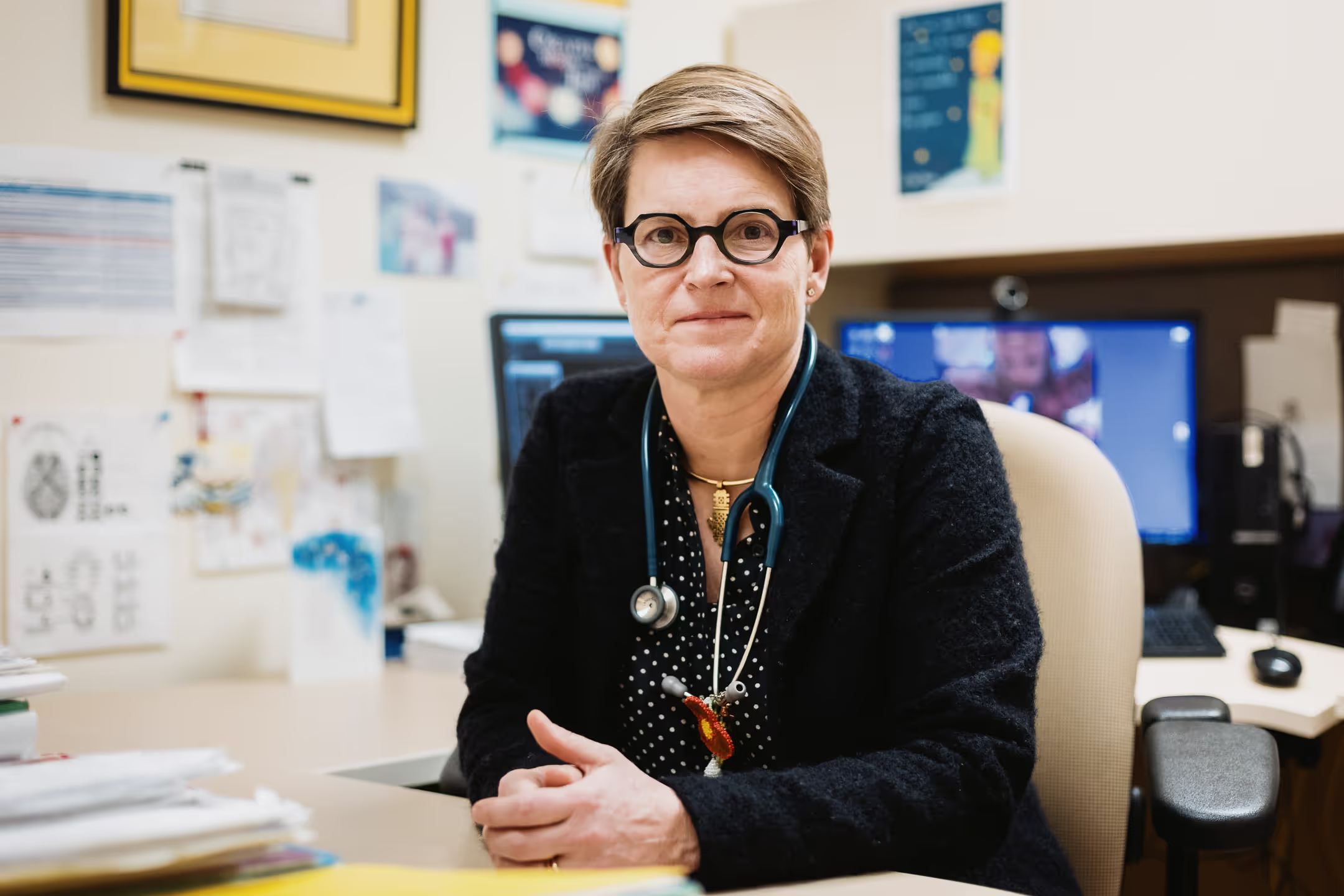
Dr. Wingfield Rehmus is a Clinical Associate Professor in the Department of Pediatrics at the University of British Columbia and Head of the Division of Pediatric Dermatology at BC Children’s Hospital.
What is epidermolysis bullosa? What are the symptoms?
Epidermolysis bullosa (EB) is not a single disease, but a family of conditions that all lead to fragile skin that blisters easily. EB is genetic, so it’s not something that you can acquire. It can be passed from parent to child or occur as a new genetic mutation.
With EB, any kind of mild friction or trauma can cause the skin to split and blister and develop open sores. This can even happen spontaneously. The condition ranges in severity, with mild forms of EB resulting in localized blisters and more severe forms causing widespread blisters and open sores that require constant care. The skin splitting can happen at very different levels, either superficial or deeper, depending on the specific change in the gene. EB can also have internal health implications such as kidney problems and nutritional challenges.
The condition usually shows up in early infancy. Children with EB are sometimes called butterfly children, because their skin is as fragile as a butterfly’s wing.
Are there different types of EB? Do they impact patients differently?
There are three major subtypes of EB: EB simplex, junctional EB, and dystrophic EB, plus one rare subtype called Kindler syndrome. EB simplex is the most common form and it causes superficial blisters. Junctional EB causes more significant blistering and may also cause internal health problems. Dystrophic EB causes blisters that tend to be deeper and that tend to heal with scarring. And then in Kindler syndrome, the blisters can happen at different levels throughout the skin.
Because the more severe forms of EB can cause non-healing wounds, they can have very serious long-term health consequences. People living with EB are at an increased risk of developing skin cancers, getting infections, dealing with scars and skin contractures, and having nutritional and metabolic challenges.
“It’s extraordinary how much these families, who are dealing with such a complex medical problem, support each other and maintain a positive outlook…”
People living with mild forms of EB simplex can typically go about their day-to-day life as would anyone who doesn’t have EB, although they have to pay special attention to where they might get blistering. They may need to limit their activities and accommodate what shoes they wear — that sort of thing. But the most severe forms of EB are entirely life-altering. These patients have a shortened life expectancy and live with chronic pain because of the open sores. They may need to spend a few hours changing their dressings, sometimes daily or at least a few times a week, as they need to keep their skin wrapped and protected from the outside world so that it doesn’t blister or get infected.
There’s a significant psychological impact to EB. It’s incredibly challenging living with a chronic, visible disease that causes pain and that’s so uncommon. People who have EB may feel very alone.
Is EB a challenging condition to manage? If so, why?
Managing EB is complex, requiring multidisciplinary medical care from various specialists, including dermatologists, plastic surgeons, pain specialists, dentists for oral care, and GI teams for nutritional issues.
For patients and caregivers, EB – especially dystrophic EB – really changes much of what they’re able to do in terms of activities. They have to deal with complex wound care at home and manage the pain that comes along with this. Families and patients often require at-home nursing support, specialized dressings, pain management, and modified diets. As a result, EB is expensive and complicated to manage.
I must note that the families affected by EB who I’ve had the pleasure of meeting are incredible. They’re exceptionally resilient. It’s extraordinary how much these families, who are dealing with such a complex medical problem, support each other and maintain a positive outlook, despite all that they’re going through.

Why is it an exciting time for the EB community?
It’s a very exciting time when it comes to therapy. After decades of research, the first topical gene therapy has been approved by the American Food and Drug Administration (FDA) for treating wounds in dystrophic EB. Other exciting new developments include protein therapy, and skin grafts comprised of gene-corrected cells from the patient’s own skin. Topical therapies including an anti-inflammatory gel, certain antibiotics, and a birch bark extract have also been helpful with wound healing in different forms of EB.
Additional advancements in EB research include gene testing (instead of invasive biopsies on newborns) and ongoing clinical trials for gene therapy, stem cell therapy, and cell transplants. There’s no cure for EB yet, but these advancements are very promising.
What can the average Canadian do to support those living with a rare condition like EB?
There are ongoing efforts throughout Canada aimed to increase awareness of the disease, made possible through national organizations like DEBRA Canada, an EB patient support group. Some very brave people who have struggled with EB have also publicly shared their stories, which has significantly raised awareness amongst the general public.
To support those brave individuals and patient groups, you can educate yourself about EB to help raise awareness, engage with organizations that are helping families and people who are managing the condition, and help to fund research programs and partnerships. Lobbying and voting in ways that encourage the federal government to support scientific research is also very helpful.
{{CTA}}
This content was supported by Chiesi Global Rare Diseases. This page was developed by Patient Voice, and the supporter did not influence the final article or editorial themes of this content.
DEBRA Canada is committed to fostering a world where individuals no longer suffer the painful and debilitating effects of Epidermolysis Bullosa (EB). Through a range of programs, services, educational initiatives, advocacy, and research, we aim to alleviate the challenges inflicted by this condition and work towards improving the quality of life of those affected by EB.
If you want to learn more about EB or wish to actively contribute by becoming a member, supporter, volunteer, or organizing an event, we invite you to explore our website at debracanada.org. Visit our website to discover more about our programs and services and learn how you can join us in making a difference.
%20(1).jpg)






